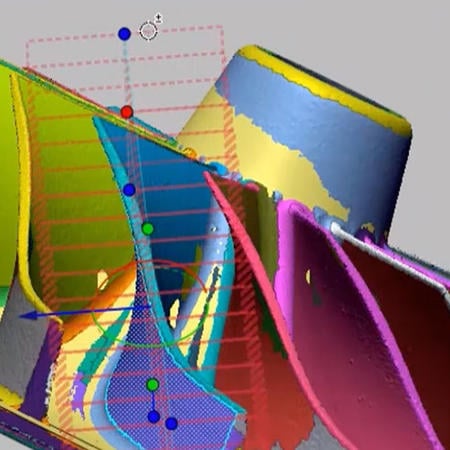In every academic discipline, there are leaders, and there are followers. The University of Applied Sciences Hannover, Media, Information and Design Department (www.hs-hannover.de) is internationally known as a leader in the field of industrial design and mechanical product design. The faculty’s enthusiasm for their field makes Hannover’s Media, Information and Design Department an incubator and test-bed for new technology and methods.
Additionally, the Department’s reputation for innovation has made it the preferred destination for selective graduates interested in training with state-of-the-art methods used in industry. FHH is continuing to prepare its students, and enhance its reputation by offering training in Geomagic Design X.
Professor Dr.-Ing. Falk Höhn (FHH – faculty III) has studied the history of reverse engineering software, and is expert in creating new design based on existing shape. Prof. Dr. Falk Höhn has tracked activities in the commercial realm. One of Dr. Falk Höhn’s inspirations is Trimetric GmbH (www.trimetric.de), a German-qualified service bureau using Geomagic Design X to create native CAD models from scan data. Trimetric’s success with Design X has inspired Prof. Dr.-Ing. Falk Höhn to use Design X as the core of a course in which students improve on the design of existing parts. In this case, they chose the popular Ducati Hypermotard motorcycle, and set out to improve on the motorcycle’s seat for passenger comfort and aesthetics. For their coursework, the students use CAD from one of the major vendors like Solidworks, ProE/Creo, Inventor, UG Siemens NX and CATIA. The learning curve is shortened by Design X which has a familiar user interface, similar to the CAD software.
More importantly, Geomagic Design X enables the students to generate complete parametric CAD Models from 3D Scan data, and to transfer those models – complete with the modeling history to the CAD system of choice. This is known as third generation or 3G modeling. Design X is unique because it retains both the shape and the history (i.e., the sequence in which each feature is created).
Alternative methods (2G modeling) capture the shape of the part, but that is only half the job. This history or sequence is critical to defining the relationship between various features, and – in a broader sense – the intention of the original designer. Without the history, later changes to the model may make it unusable. For example, those five lug bolts on your car’s wheel are related to each other by being on a single circular pattern that is concentric to the car’s spindle. If the model did not capture this point of the designer’s intention, subsequent edits might yield an error-prone wheel that hops down the road or that doesn’t fit the lug bolt pattern. Without the design intent, one edits the CAD model at their peril.
These students who are learning on motorcycle seats in class will graduate to design medical devices, automobiles, aircrafts; places where choices and edits have life or death implications. FHH students are well prepared by training with an academic leader on the same Geomagic Design X software they’re likely to use in these critical industries today.
